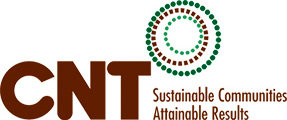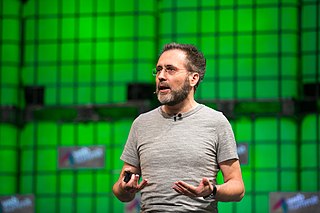Related Research Articles

A data center or data centre is a building, a dedicated space within a building, or a group of buildings used to house computer systems and associated components, such as telecommunications and storage systems.
Green computing, green IT, or ICT sustainability, is the study and practice of environmentally sustainable computing or IT.

The Center for Neighborhood Technology (CNT) is a non-profit organization, headquartered in Chicago, Illinois, which is committed to sustainable development and urban communities.

Urs Hölzle is a Swiss software engineer and technology executive. As Google's eighth employee and its first VP of Engineering, he has shaped much of Google's development processes and infrastructure, as well as its engineering culture. His most notable contributions include leading the development of fundamental cloud infrastructure such as energy-efficient data centers, distributed compute and storage systems, and software-defined networking. Until July 2023, he was the Senior Vice President of Technical Infrastructure and Google Fellow at Google. In July 2023, he transitioned to being a Google Fellow only.

The Alliance to Save Energy is a bipartisan, nonprofit coalition of business, government, environmental, and consumer groups based in Washington, D.C. The Alliance states that it advocates for "energy-efficiency policies that minimize costs to society and individual consumers, and that lessen greenhouse gas emissions and their impact on the global climate." The Alliance's chief activities include public relations, research, and lobbying to change U.S. energy policy.
The Climate Savers Computing Initiative was a nonprofit group of consumers, businesses and conservation organizations dedicated to promoting smart technologies that improve power efficiency and reduce energy consumption of computers. Formed in 2007, it was based in Portland, Oregon. In July 2012, Climate Savers Computing Initiative combined with The Green Grid and its programs continue within that organization.

The smart grid is an enhancement of the 20th century electrical grid, using two-way communications and distributed so-called intelligent devices. Two-way flows of electricity and information could improve the delivery network. Research is mainly focused on three systems of a smart grid – the infrastructure system, the management system, and the protection system. Electronic power conditioning and control of the production and distribution of electricity are important aspects of the smart grid.
In computing, performance per watt is a measure of the energy efficiency of a particular computer architecture or computer hardware. Literally, it measures the rate of computation that can be delivered by a computer for every watt of power consumed. This rate is typically measured by performance on the LINPACK benchmark when trying to compare between computing systems: an example using this is the Green500 list of supercomputers. Performance per watt has been suggested to be a more sustainable measure of computing than Moore's Law.
The Green Grid is a nonprofit, industry consortium of end-users, policy-makers, technology providers, facility architects, and utility companies collaborating to improve the resource efficiency of data centers.
Dynamic Infrastructure is an information technology concept related to the design of data centers, whereby the underlying hardware and software can respond dynamically and more efficiently to changing levels of demand. In other words, data center assets such as storage and processing power can be provisioned to meet surges in user's needs. The concept has also been referred to as Infrastructure 2.0 and Next Generation Data Center.
Power usage effectiveness (PUE) is a ratio that describes how efficiently a computer data center uses energy; specifically, how much energy is used by the computing equipment.
Meter data management (MDM) refers to software that performs long-term data storage and management for the vast quantities of data delivered by smart metering systems. This data consists primarily of usage data and events that are imported from the head-end servers managing the data collection in advanced metering infrastructure (AMI) or automatic meter reading (AMR) systems. MDM is a component in the smart grid infrastructure promoted by utility companies. This may also incorporate meter data analytics, the analysis of data emitted by electric smart meters that record consumption of electric energy.
IT energy management or Green IT is the analysis and management of energy demand within the Information Technology department in any organization. IT energy demand accounts for approximately 2% of global CO2 emissions, approximately the same level as aviation, and represents over 10% of all the global energy consumption. IT can account for 25% of a modern office building's energy cost.
An Energy Rebate Program, or Energy Credit Incentive Program, provides a cash rebate program for customers planning to install new, energy efficient information technology (IT) equipment or cooling systems. These programs push companies to construct more energy efficient data centers, or to consolidate compute, storage and networking resources via virtualization technologies.
Green Power Usage Effectiveness (GPUE) is a proposed measurement of both how much sustainable energy a computer data center uses, its carbon footprint per usable kilowatt hour (kWh) and it uses its power; specifically, how much of the power is actually used by the computing equipment. It is an addition to the power usage effectiveness (PUE) definition and was first proposed by Greenqloud.
Smart grid policy in the United States refers to legislation and other governmental orders influencing the development of smart grids in the United States.
Romonet is a UK-based, privately held company, headquartered in London, UK, that provides cloud-based solutions and services to data centers and associated technology. Romonet solves energy, water, capacity and financial challenges in data centers. They claim Romonet makes the first software that accurately predicts total cost of ownership (TCO) and properly model energy flow. They began by creating a term called 'data center predictive modeling' (DCPM) that "rather than collecting real-time data, they predict data center configuration and architecture." Romonet Inc was launched in 2011 with the goal of bringing the product to the US market.
The SNIA Emerald Program Power Efficiency Measurement Specification, is a storage specification developed and maintained by the Storage Networking Industry Association (SNIA) and cross-referenced by the Environmental Protection Agency’s EnergyStar program. The specification consists of a storage types taxonomy, system under test workload and energy measurement method, measured metrics for active and idle operational states, and presence tests for capacity optimization technologies. The measured metric data is generated through the use of well-defined standard testing and data reduction procedures prescribed in the SNIA Emerald Specification.
Water Usage Effectiveness (WUE) is a sustainability metric created by The Green Grid in 2011 to attempt to measure the amount of water used by datacenters to cool their IT assets. To calculate simple WUE, a data center manager divides the annual site water usage in liters by the IT equipment energy usage in kilowatt hours (Kwh). Water usage includes water used for cooling, regulating humidity and producing electricity on-site. More complex WUE calculations are available from The Green Grid website.

A green data center, or sustainable data center, is a service facility which utilizes energy-efficient technologies. They do not contain obsolete systems, and take advantage of newer, more efficient technologies.
References
- ↑ SearchdataCenter.com - data center infrastructure efficiency (DCIE)
- ↑ "The Green Grid - The Green Grid Data Center Power Efficiency Metrics: PUE and DCiE". Archived from the original on 2009-02-17. Retrieved 2009-05-09.
- ↑ DatacenterDynamics FOCUS - Data Center Efficiency: If you can't measure it, you can't improve it [ permanent dead link ]